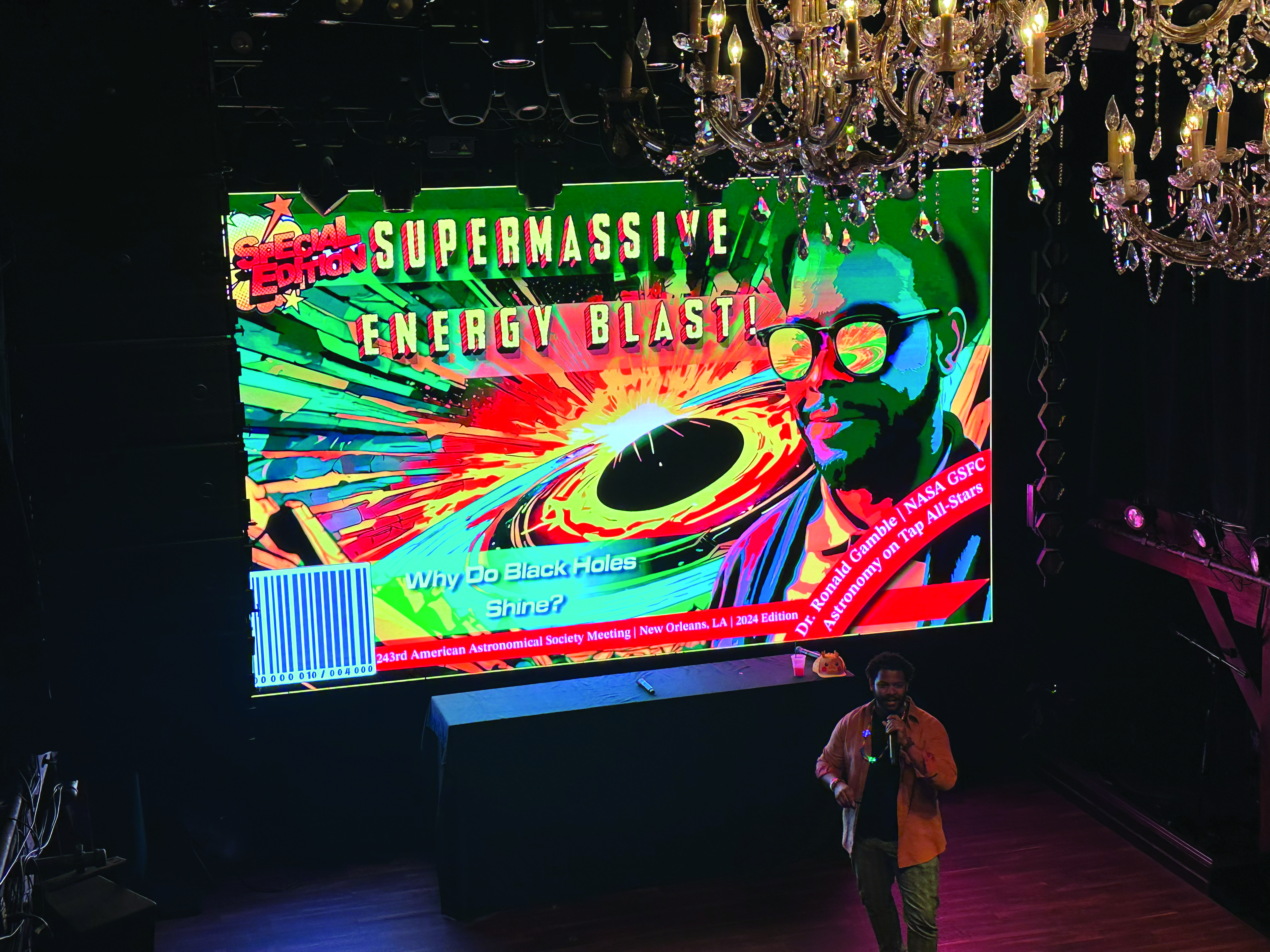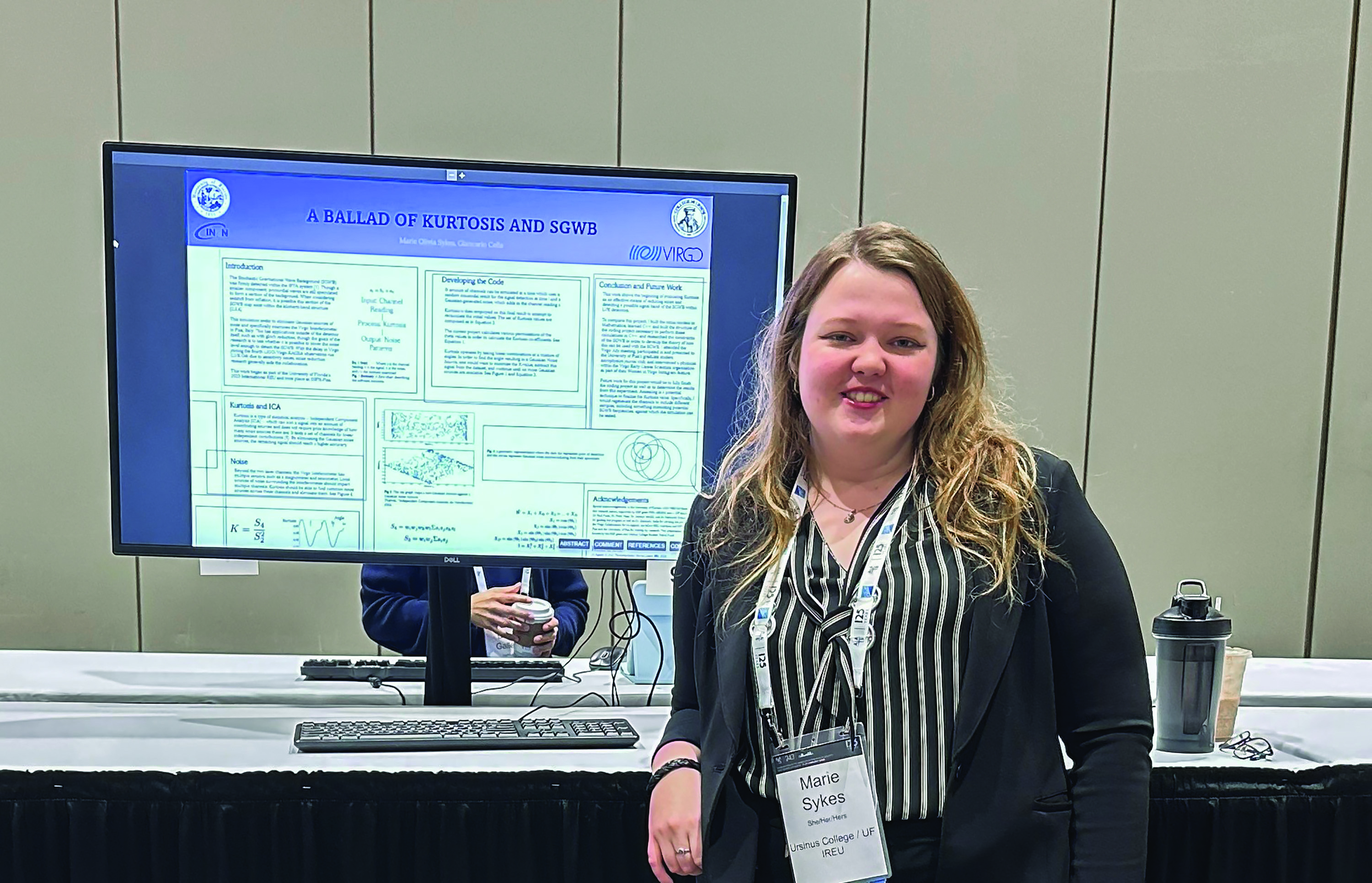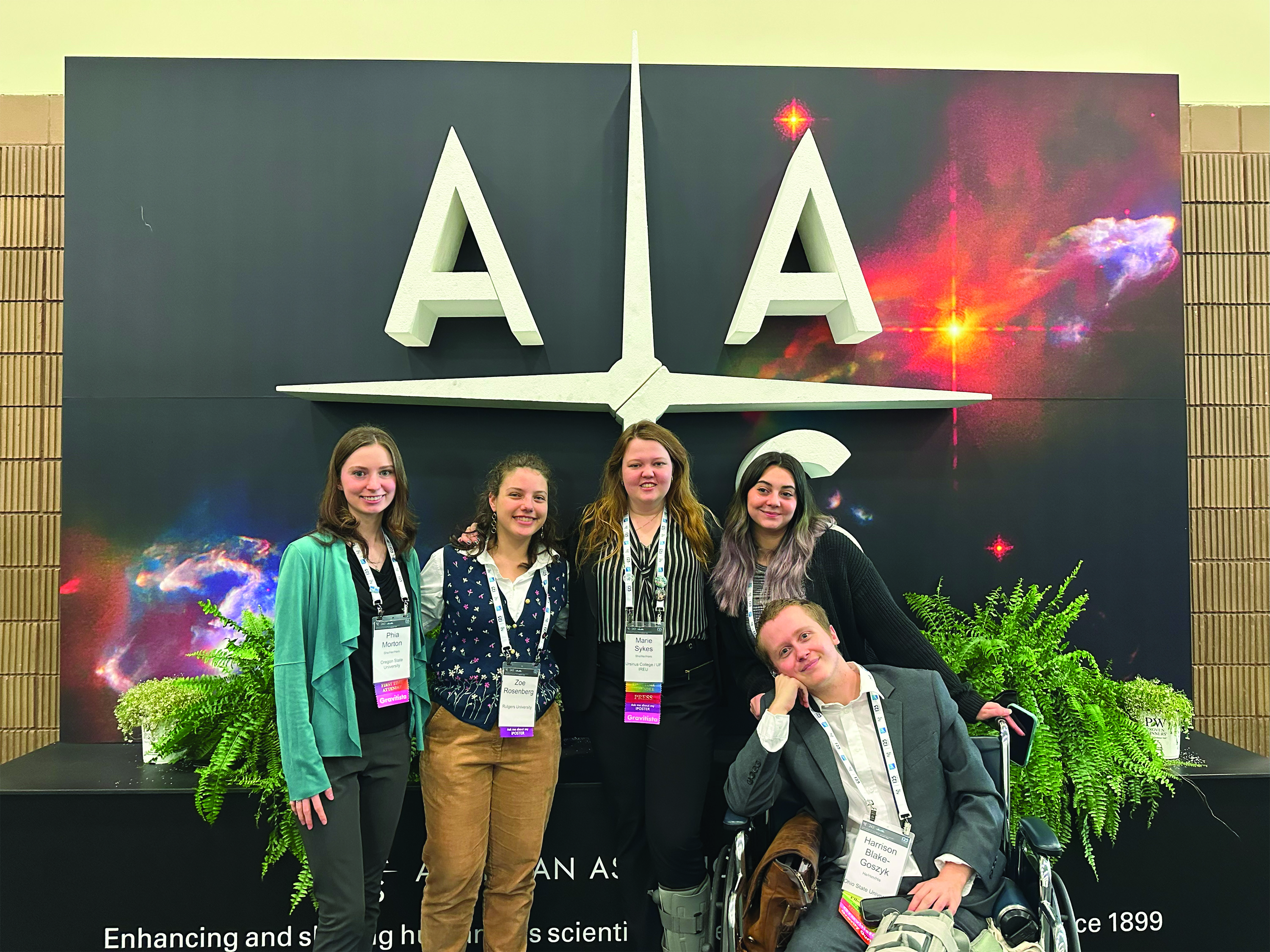AAS 243: New Orleans Wrap-up
Spring
2024
Meeting Notes - SPS Reporters at Science Conferences
AAS 243: New Orleans Wrap-up
Marie Olivia Sykes, SPS Reporter, Ursinus College
In 2024 the American Astronomical Society (AAS) is celebrating its quasquicentennial—125 years of existence! The anniversary celebration kicked off in January, when the society’s 243rd Meeting, held in New Orleans, Louisiana, brought more than 3,500 astronomers together to share research and community. Attendees included professors, researchers, early career scientists, amateurs, and around 860 undergraduates.
I attended the meeting representing Ursinus College, where I attend school, and the University of Florida's International Summer Research Program in Gravitational Wave Physics, which I participated in last summer.
The conference consisted of plenaries interspersed with poster sessions and short talks highlighting research on exoplanets, stars, gravitational waves, and more, as well as time to mingle with other attendees. I presented a poster on my summer work, which included noise reduction for the Virgo interferometer and uncovering a portion of the gravitational wave background.
The AAS meeting also had special events. The night before the meeting officially opened, AAS hosted a grad school fair alongside an undergraduate mixer. New to the conference was a plenary dedicated to science policy that discussed the Supreme Court reversing affirmative action in admissions. Notably, this year the International Astronomical Union's General Assembly is being held in Africa for the first time, so the organizers spoke about that. In addition, AAS partnered with Astronomy on Tap to organize dinner events on two nights of the conference. These were a hit, with more than 700 people in attendance on the second night.
In his Fred Kavli plenary talk, Stephen Taylor, an associate professor at Vanderbilt University, discussed how the NANOGrav Collaboration used an array of pulsars to detect a stochastic gravitational wave background (see page 15). Later, I asked him how he got to where he is today. “I remember getting really interested in astronomy during one particular summer,” he said. “It was the 30th anniversary of the moon landing, and there was also a total solar eclipse in the UK. Space news was huge that summer, and I got hooked on astronomy!”
In high school, Taylor’s school had a week during which students could shadow someone working in their field of interest, but when he said he wanted to be an astrophysicist, “they had no idea what to do with me! But I eventually got connected with a laser laboratory in Oxford, UK.” That week he attended a public talk and heard “none other than Jocelyn Bell, who discovered pulsars, which would later become integral to my work!”
Student Perspectives
Undergraduates at a conference of this size might be overwhelmed, at least at first. According to Dylan Hope, a senior from Cal Poly Pomona who presented research on bow shocks at the poster session, the meeting felt intense—especially as a first-time conference attendee. But Hope said it also revealed future opportunities. “Now that I’ve given my poster ... I feel a lot more confident about presenting my work.”
Piper Lentz, a sophomore from the University of Massachusetts Amherst, presented a poster examining exoplanet orbit and mass fits. “I had high hopes, and the conference has exceeded them so far,” she said, adding that the undergraduate mixer taught her about SPS, and she was interested in bringing the resources she learned about back to her campus.
Carlton Passley, a sophomore at Delaware State, participated in the National Radio Astronomical Observatory’s (NRAO) National Astronomy Consortium. Passley presented a poster highlighting his work at Princeton University over the summer. His primary goal in pursuing research opportunities? “To broaden my perspective,” he said. In preparation for a physics education career, he plans to explore a different research topic next summer to continue improving his skills.
Sophia Lanava, a senior from Bryn Mawr College and her SPS chapter's treasurer, said the meeting was great for those hoping to “connect with professionals in the field” and talk to people about grad school.
Advice from Astronomers
Conferences like AAS bring together those with all levels of experience, opening dialogues between institutions and across areas of astronomy research. I asked a handful of astronomy professionals about their paths, and here is what they shared.
“I got a degree in business before I got interested in physics and astronomy,” said Lisa Storrie-Lombardi, president and observatory director for Las Cumbres Observatory. “It’s never too late to actually change your mind about what you want to do.” She also shared that getting hands-on experience can really help with decisions about what to do, especially when it comes to observing or being a theorist. “It doesn’t have to be something dramatic,” she said. “The earlier you can get that experience, the earlier you know.”
Phillip Wiseman, a postdoc at the University of Southampton, had advice for undergraduates. “Enjoy it,” he said. “It’s easy to get stressed. It’s easy to be overwhelmed. Everyone is. I’ve been a post doc for six and a half years. I still get overwhelmed and stressed. I still get imposter syndrome. My advisors still get imposter syndrome. Once you’ve accepted that everyone is feeling like an imposter, you can enjoy it.”
Adam Mann, a space and physics reporter, shared this advice for people interested in science communication. “Figure out opportunities to write, whether that’s at your school newspaper or taking classes about science communication,” he said. “See if you actually like it, and [generally] do what interests you. I believe that nothing goes to waste. You will end up using it one way or another.”
Dashon Jones, a graduate student at Rice University, got into undergraduate research by asking his school’s only cosmology professor about their research and reading their papers. “If you reach out to people, if you show initiative, they’re more than willing to take you,” he said.
There was one common thread among all the researchers I spoke with: If you’re interested in getting involved with research, go for it.
Attend AAS this Summer
The 244th Meeting of the American Astronomical Society will take place June 9–13, 2024, in Madison, Wisconsin. For details, see aas.org/meetings/aas244.



